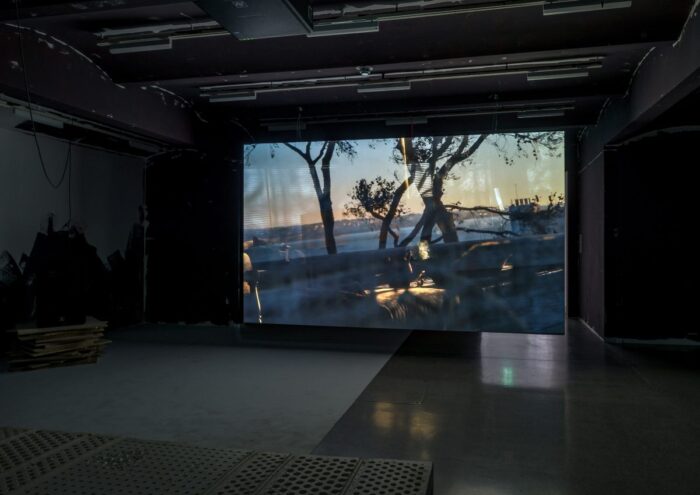
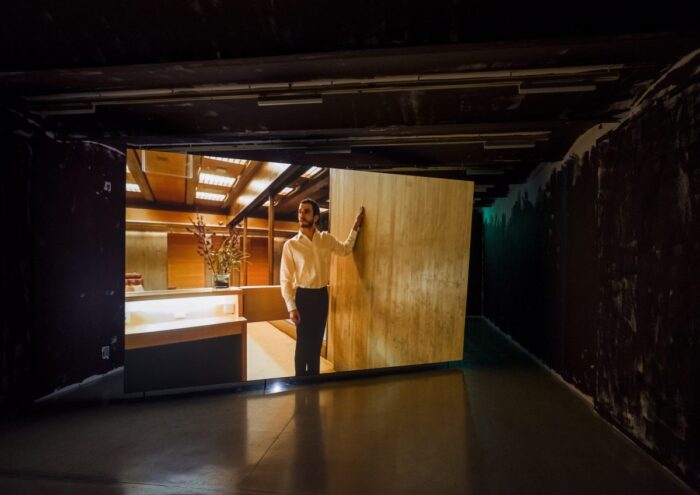
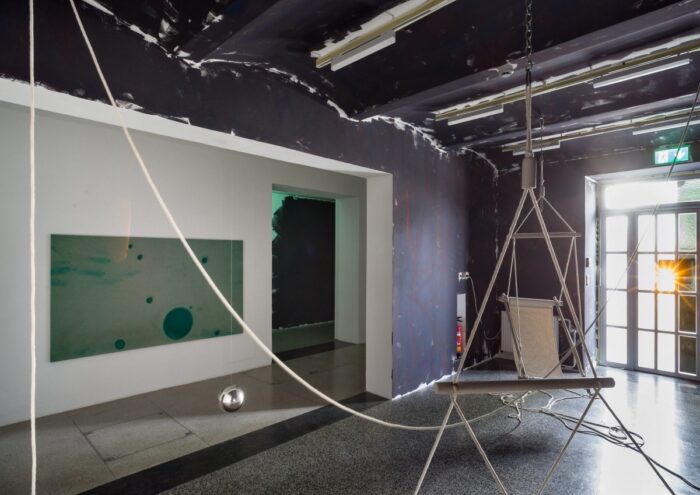
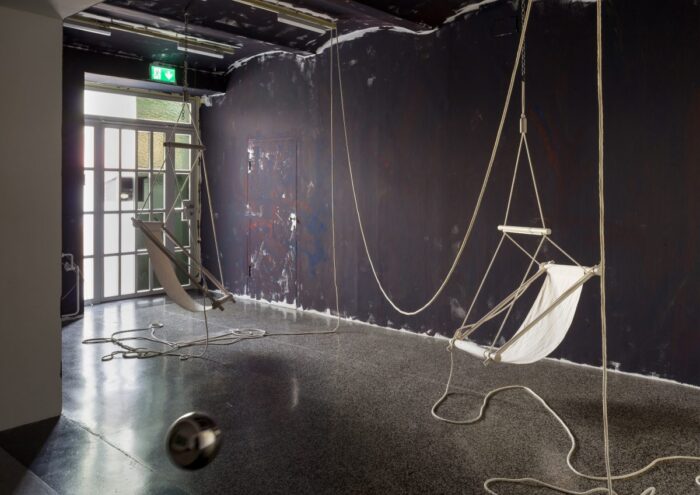
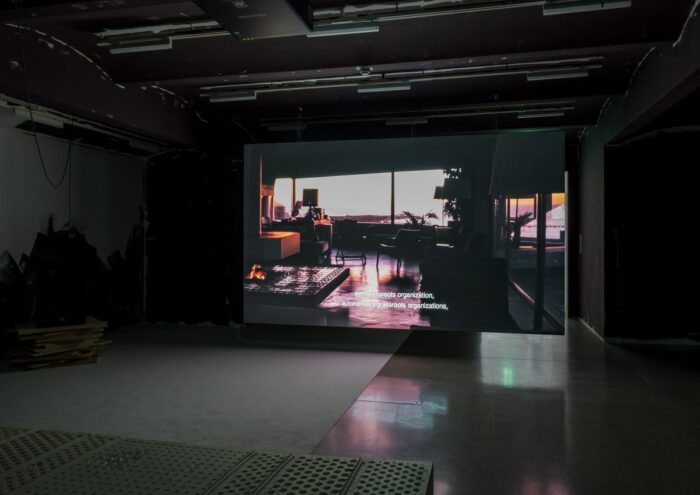
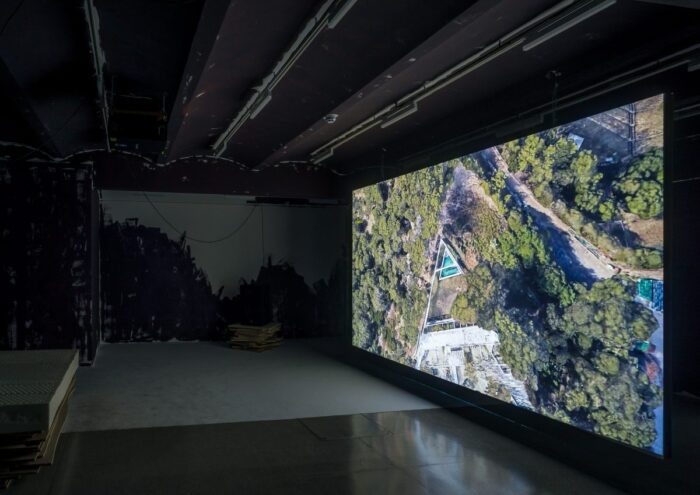


Emily Wardill at Secession, Vienna
Sep 18, 2020 to Nov 8, 2020
All Images courtesy of Secession and the artist
Emily Wardill’s films, photographs, and objects probe the complexity of perception and communication, the question of how reality appears authentic to us, and the displacements of substance and form affected by the individual nature of the imagination. Her work has won acclaim for the sensual and psychologically fraught yet fractured narratives which she constructs. The films that she started making in the mid-2000s are typically defined by a narrative framework, but the plots as such tend to be secondary. The focus is on other aspects: the mechanics of storytelling, the relationship of imaginary space to language and the interplay between gesture and word.
In her exhibition at the Secession, Emily Wardill debuts her most recent film project, Night for Day (2020), an installation of film and sculptures that weave into one another, and the film I gave my love a cherry that had no stone (2016).
For Night for Day (2020), Wardill constructs a feigned mother-son relationship. Her source material is a series of extensive interviews with Isabel do Carmo, a revolutionary resistance fighter against the fascist regime in Portugal that fell in 1974, and two young men, Alexander Bridi and Djelal Osman, astrophysicists who run a startup in Lisbon that develops software enabling computers to recognize moving images. These different strands allow Wardill to, as she puts it, “think about what would happen if a communist revolutionary gave birth to a techno utopian, if gender as performativity was thought through the lens of women making the political decision to live clandestinely in Portugal for a large part of the twentieth century and if the ‘Last Woman’ were the fembot from The Tales of Hoffman.”
How can utopian visions be articulated between the poles of modernity, nostalgia, and technology? How do ideologies consciously or unconsciously find expression in people’s lives? How does the interaction between position, person, and body inform women’s performance, and what sets the latter apart? These questions run through the film as a guiding thread; the narrative structure, by contrast, remains fragmentary. Wardill collages her filmic material in a form that undercuts illusion, deliberately generating discrepancies between image and sound and operating with blanks. Among the fragments she integrates into this narrative are diaristic moments, filmed sequences with props from her studio, 3D footage of ruins, found footage from films in which humans pretend to be machines or dress up as machines and pretend to be animals, and quotes that range from Hannah Arendt, who talked already in the 1950s about the undemocratic principles of tech, to more contemporary writers on the architectural underpinnings of narrative in Hollywood.
As a kind of imaginary home for her mother-and-son couple, Wardill chose the architect António Teixeira Guerra’s family residence, which was completed just before 1974. She shot the material at the time he always chose to invite guests—the magic hour. The subtle play of the setting sun’s rays, the breaking- down of delineations between objects and their shadows, and the way the architecture seems to blend in with its environment are difficult to capture with the camera, and so it often appears that the camera is searching for light and clarity. In the interplay with the narrative, the film thus repeatedly also draws attention to the recording technologies themselves and their own struggle to accurately render reality. For her installation at the Secession, Wardill weaves a sprawling web out of the video and the props she used in it: two suspended chairs, a witches ball that swings back and forth like a pendulum, cloths faded by sunlight, and a slide projector casting images of the moon into the room through the glass door. Roughly and perfunctorily painted walls underscore the impression of a sketch that is pretending to be a finished piece just as night was pretending to be day.
In the second film in the exhibition, I gave my love a cherry that had no stone (2016), a male dancer is seen wobbling and lurching through the twilit foyer of the Calouste Gulbenkian Foundation in Lisbon. His movements were shot by a camera person pretending to be a drone and a drone pretending to be immaterial. The camera glides through the modernist interior and takes on the nature of a figure in its own right. An empty white shirt appears as a third character, floating across the room and becoming embodied with air. The material and the invisible human presence or agency get mixed up in a space where time itself is able to make huge jumps backward and forward.
Emily Wardill was born in the UK and lives and works in Lisbon.
An artist’s book by Emily Wardill will be released in conjunction with the exhibition.
The exhibition program is conceived by the board of the Secession.
